Described by Fitzroy Maclean as ‘having a graceful quality, a southern charm and an air of leisure, found nowhere else in the Soviet Union’, Tbilisi’s architectural marvels and cobblestoned old town promise a weekend of colour and culture for travellers seeking adventure in a city still largely undiscovered by foreign tourism.
The Old Town
The Old Town of Tbilisi (the Kala) lies higgledy-piggledy on the crowded slopes between the river and the citadel of Narikala. Here, in an area inhabited, at various times, by Persians, Tatars, Jews and Armenians, you can visit a mosque, a synagogue, and Armenian and Georgian churches, all still in use, as well as a Roman Catholic church, built in 1804 and reconsecrated by the Pope in 1999.
Explore Freedom Square
The best starting point for a day’s walk in the Old Town is Freedom Square (Tavisuplebis Moedani), one of the busiest stations on the metro (which calls it Liberty Square). Laid out by the Russians between the 1820s and 1870s, it was originally known as Yerevan Square, then Theatre Square and was then Lenin Square until 1990; the statue of Lenin in its centre was replaced by a grassy roundabout, on the site of the city’s first opera house, built in 1846 (the south wall was unearthed 30 years ago when the Rustaveli Avenue/Pushkin Street pedestrian underpass was built).
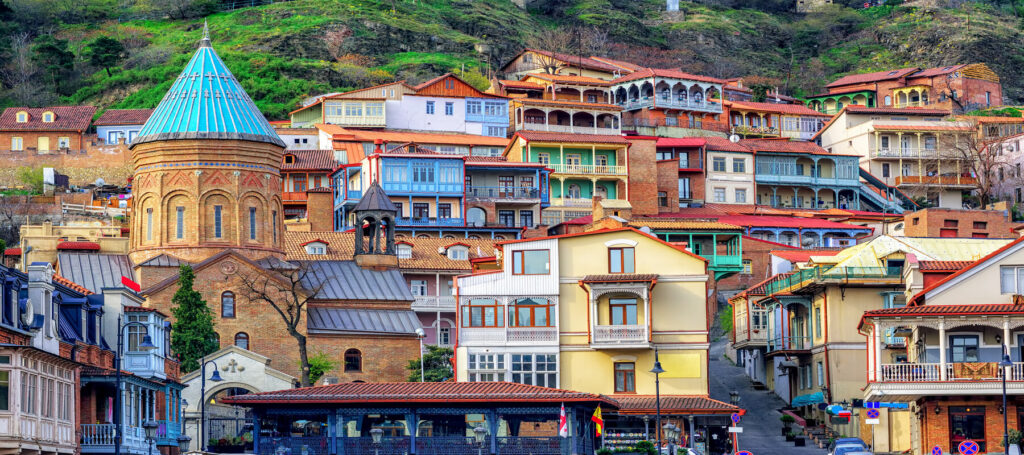
A very tall column, the Monument of Freedom and Victory, with a kitschy gilded statue of St George and the Dragon by the sculptor Zurab Tsereteli atop it, now has pride of place in the centre of the square. The square is dominated by the City Hall, built as a police station in the 1820s and remodelled in 1882–86 by the German architect Peter Stern, with a third storey and clock tower added in 1910–12; this is an attractive building with stripes of sandy green and white and mauresque stucco.
The west side of the square was gutted in the civil war, but modern buildings such as the Courtyard by Marriott Hotel have now filled the gap. To the northwest is Pushkin Square, really an extension of Freedom Square where the chaotic oriental bazaars were cleared away by Beria; now, old men play backgammon here beneath the trees and a bust of Pushkin. There’s also a tourist information office here, as well as the grave of Kamo, a Bolshevik activist who was killed by a car in 1922, in what was almost certainly a murder organised by Stalin.
Take a dip in the city baths
Although Tbilisi has been famous for its sulphurous hot waters since Vakhtang Gorgasali moved his capital here in the 5th century, most of the city’s baths date from the 19th century. They have always been central to community life, and historically were used for checking that prospective sons/daughters-in-law have no physical defects. For a taste of traditional Georgian culture and a break from the bustling cobbled streets, consider spending an afternoon soaking in one of the numerous stunning bathing houses the city has to offer.
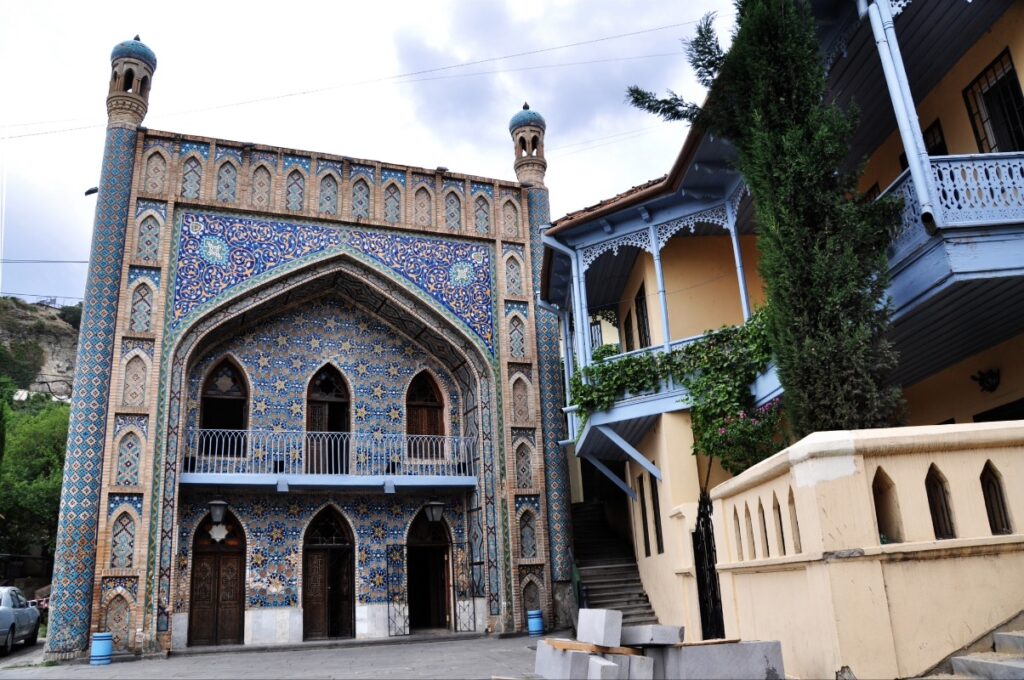
Bathing in the single-sex public section costs just a few lari – it’s a colourful and friendly experience, but there’s not much point if you can’t follow the chatter. To enjoy the full experience, you and a few friends should take a private room – which is in fact two rooms, one for (un)dressing and resting (with shower and toilet), the other with a large tub with hot sulphur water flowing through it and a marble massage table.
For a particularly aesthetically pleasing experience, try the immensely popular Orbeliani or Chreli (‘Motley’) Baths at the top of Abanos kucha. Boasting blue-tiled façades and minaret-style towers, these stunning 17th-century locations (remodelled in the 19th century) offer a range of different bathing sessions across their hot and cold pools.
Visit the Great Synagogue
The beautiful red-brick façade of the Great Synagogue (1903) is a must-see sight for anyone visiting the Old Town. Located at Leselidze 47, this popular place of worship has a blue and gold lower hall (without a women’s gallery) for daily services (at 09.00) and a brighter upper hall with a gallery and large chandeliers for Sabbath and festivals. Both were artfully painted with geometric motifs, biblical verses and prayers in the 1940s.
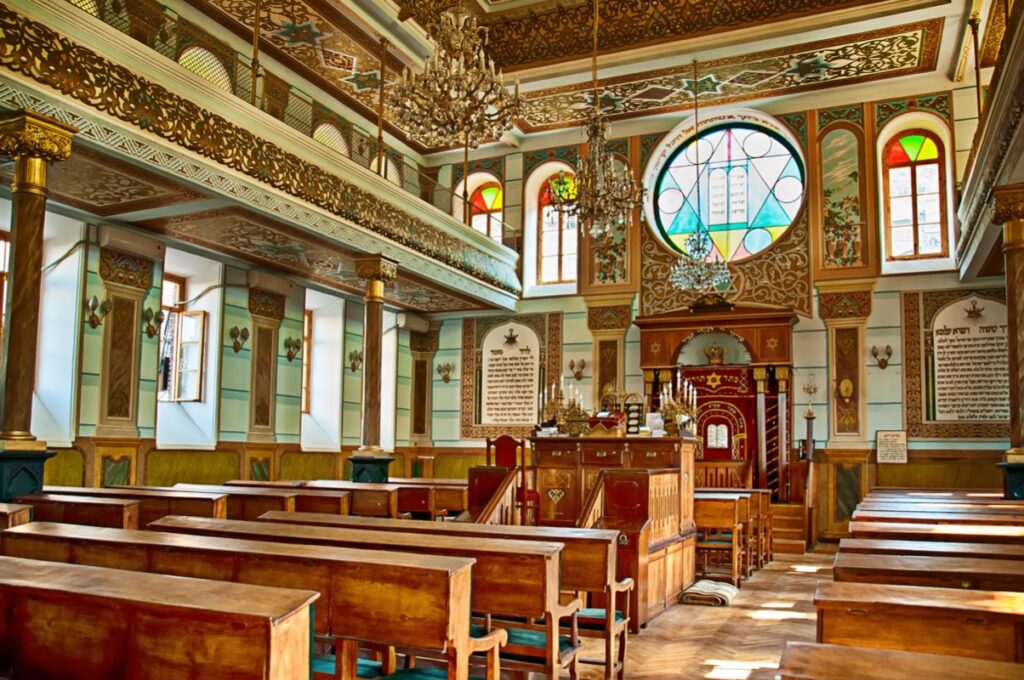
For those in Tbilisi on the Sabbath or during another Jewish holiday, the Great Synagogue offers impressive services conducted according to the Georgian Jewish rite that attract large numbers of the faithful community. There’s also a ritual bath and kosher butcher, bakery and the David restaurant. In the courtyard of Leselidze 28, there’s also the Bet Rachel or Ashkenazi synagogue, reopened in 2009.
See the puppets at Gabriadze Theatre
Since opening in 1981, this fairy-tale marionette theatre has become a firm Tbilisi favourite. Fronted by a delightfully quirky clock tower, with a Pisa-esque sideways lean, the theatre is the handiwork of playwright and screenwriter Rezo Gabriadze, known for his Soviet classics.
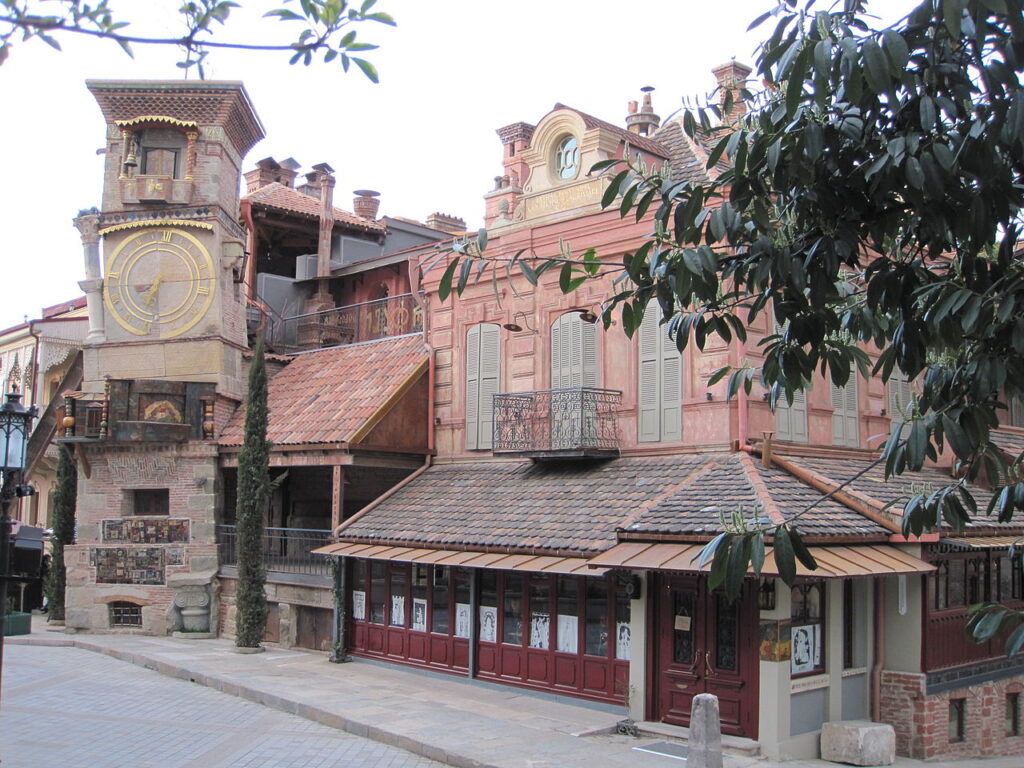
Despite their playful nature, the puppets and their shows are surprisingly high brow, with dramas such as The Autumn of the Springtime and The Battle of Stalingrad in the four-strong repertoire. Even if you can’t make one of the performances, come on the hour to see the clock tower ritual, when a little marionette soldier teeters out of the window to hit the bell with his tiny hammer.
If you’re here around lunchtime, be sure to take a pit stop at quaint Café Leila, where excellent-value veggie specials (think fresh salads and minty falafel) are served in gorgeous vintage surroundings (think crenellated ceilings and floral china).
Soak up the views from Mother Georgia
Perhaps the best way to reach the Mother of Georgia statue and the Sololaki Ridge is by the cable-car from Rikhe Park to Narikala, opened in 2012; this gives great views, especially from the one car with a glass floor, although the journey takes under 2 minutes.
Otherwise your options are the steps and pathway up from the Upper Betlemi Church; Orbiri Street, climbing steeply from near the Armenian church to the Narikala Citadel; or Sololaki Lane, a road, lined with lime and cypress trees, that turns off the Kojori Highway and passes beneath the eyesore of Ivanishvili’s business centre with its flying saucer helipad.
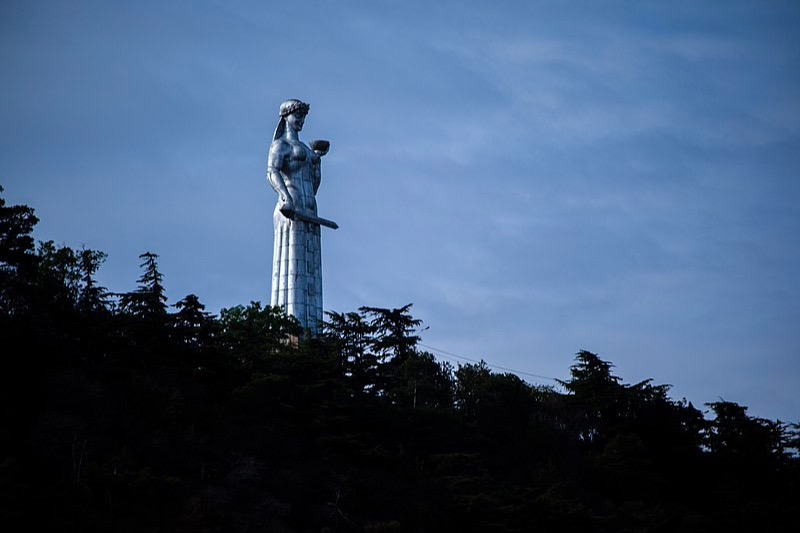
It takes 5 minutes to reach the ruins of some medieval fortifications and a view to the right over the Botanic Gardens (there’s a turnstile and a rough path down), as well as a new zip-line; and the 20m-high aluminium statue of Kartlis-Deda or Mother of Georgia, visible from all over the city.
There’s a great view down to the Old Town; there are lots of charms tied on a tree behind the statue. This was made in 1958–63 by Elgudja Amashukeli; sword in one hand and bowl in the other, it shows Georgia as hospitable but ready to defend herself. Also nearby are the ruins of the ancient Shakhtakhi Fort (from ‘Sahis Tahti’ or Throne of the Shah), which was used as an observatory in the 7th–9th centuries.
Explore Narikala Citadel
Heading east along the ridge from the Mother of Georgia, you’ll pass the cable-car terminal then fork left on to a rough path around to the gate of the Narikala Citadel. This was built in about AD360 by the Persians (who called it Shuris-tsihke), expanded by King David the Builder and restored by Mustafa Pasha’s Turks in the second half of the 16th century, before being ruined by an earthquake in 1827. Locals often come up here for picnics and to enjoy the evening views of the city.
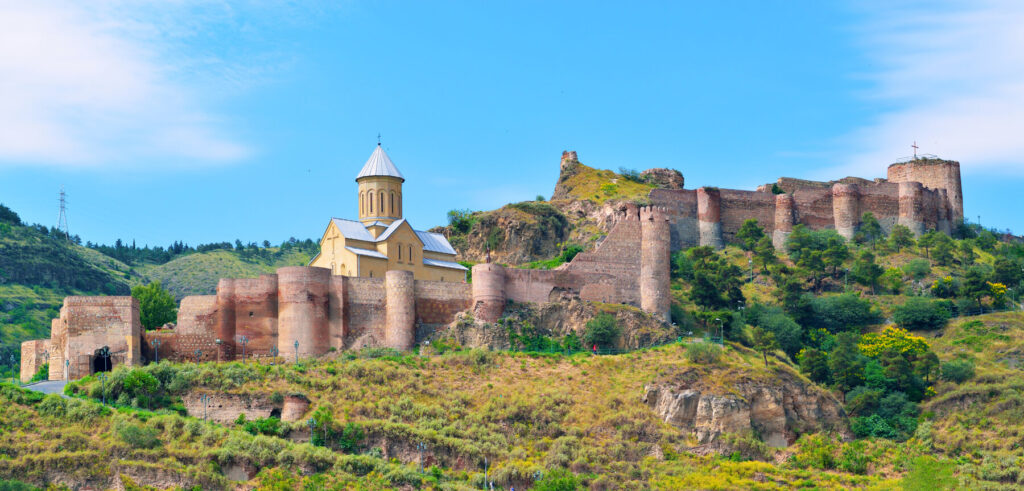
Near the car park is the 12th-century Church of St Nicholas, rebuilt in 1997, with a painted interior and a simple, modern, stone iconostasis. The fort walls are either over-restored or untouched (and being destroyed by people climbing on them); you can walk along the battlements, although there are some very steep steps. At the citadel’s south end, you’ll see the square Istanbul Tower, which was a prison under Turkish rule.
Elsewhere in the city
Marvel at some of the country’s best monasteries
Georgia is renowned for its magnificent monasteries, and two of its finest can be found just outside the city boundaries. Just a half-hour drive north of Tbilisi brings you to Mtskheta, a small town at the confluence of the Mtkvari and Aragvi rivers, where you’ll find the equally impressive Jvari and Svetiskhoveli churches. Both inscribed on the UNESCO World Heritage List, these churches are stunning in terms of location and design.
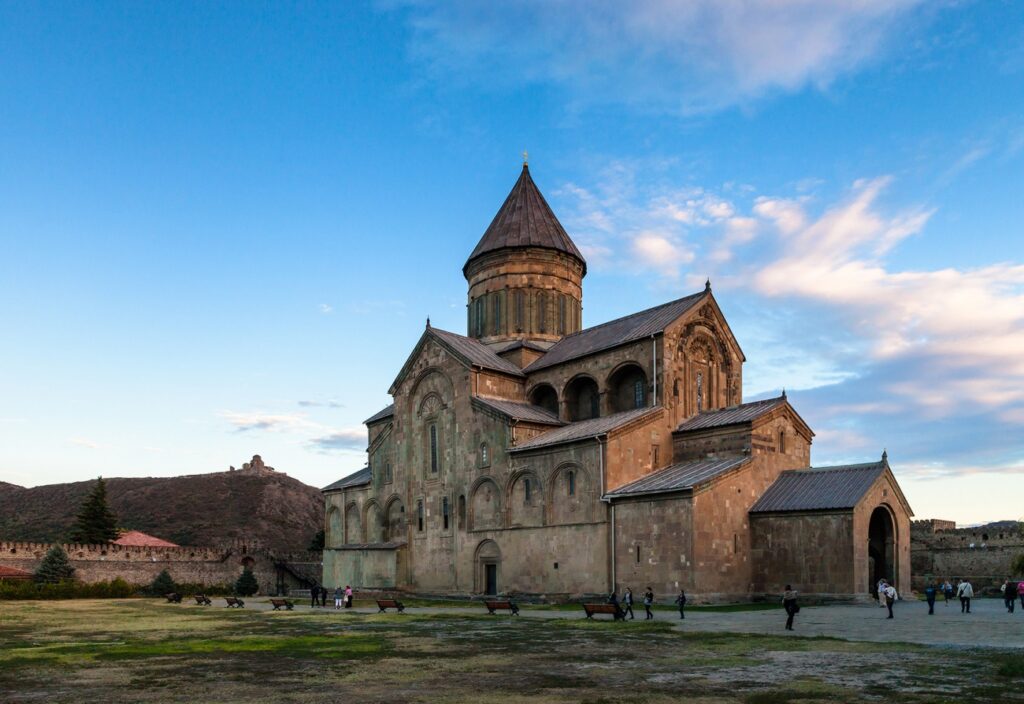
Dating from the 11th century, Svetiskhoveli (or ‘Life-giving Column of Light’) is home to part of Jesus’s crucifixion robe, which was brought here soon after his death by Elias. It is said that his sister died of joy while clutching the robe, and so tight was her grasp that she had to be buried with it. Today it remains the country’s main Orthodox cathedral, and, with its green tuff dome and elaborate frescoes, its is a beautiful sight to behold.
On the opposite hillside is Jvari (Cross) Church, a wonderfully simple but no less impressive construction dating from the 6th century. One of the finest examples of old Georgian architecture, it stands on the spot where St Nino first set up her cross overlooking the pagan shrines of Mtskheta, and inside you’ll find a huge plinth of St Nino’s Cross in the centre.
The view from the church is simply stunning, with panoramas over Mtskheta and the confluence below; the best time to visit is in the late afternoon, when the sun just begins to set and the lighting is spectacular.
Brush up on your facts at the city museums
The city’s impressive selection of museums offer a unique insight into the fascinating cultural foundations of Georgia’s capital and a welcome respite from the more hectic elements of the city.
In November 2017 the National Book Museum opened at the National Library, an impressive neo-Romanesque building housed in three imposing former banks and boasting lovely murals on its ceiling (including an external arcade). The museum displays a number of rare books, including a Georgian–Italian dictionary published in 1629, a Book of Psalms, the first book printed in Georgia, in 1709, various editions of The Knight in the Panther’s Skin, in Georgian and translated, and Ilia Chavchavadze’s library with some private belongings.
At Rustaveli 11 stands the the National Gallery, in a fine Neoclassical building known as the Khram Slavi (Temple of Glory), built in 1885–88 by Alexander Saltzmann, with a modern rear extension added in 2011.
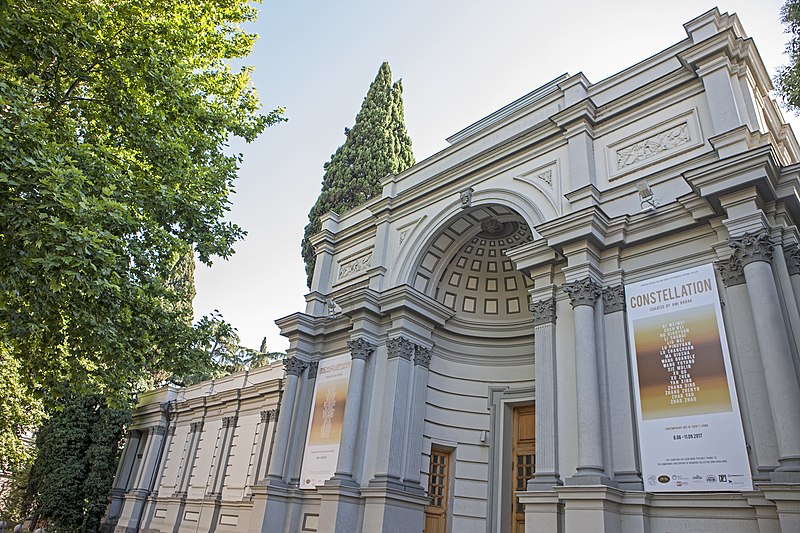
The Museum of Georgian Ethnography is an open-air museum displaying about 70 buildings from all over Georgia, in vernacular local style and traditionally furnished. You’ll see darbazi-type and flat-roofed houses from the east of Georgia, gable-roofed wooden houses from the west, and three roofing types: thatch in western Georgia, red channel tiles, and shingles. As you go around you’ll see odds and ends such as old muskets, wooden claws to protect the fingers while scything, and cots with a pipe leading to a gourd for urine below. At weekends and in summer costumed staff will be cooking or baking bread.
Haggle for bargains in the local market
Tbilisi’s central market (Bazroba) is by the station, a bustling place, where you’ll find better quality (at higher prices) upstairs; between here and the Dinamo Stadium is an even more chaotic open-air market known as the Deserters’ Bazaar, after soldiers who fled the Czarist army in the early 19th century and sold their guns and equipment there; nowadays it’s the main source of food for many of Tbilisi’s families and restaurants, and gives a wonderful insight into Georgia’s rich food culture.
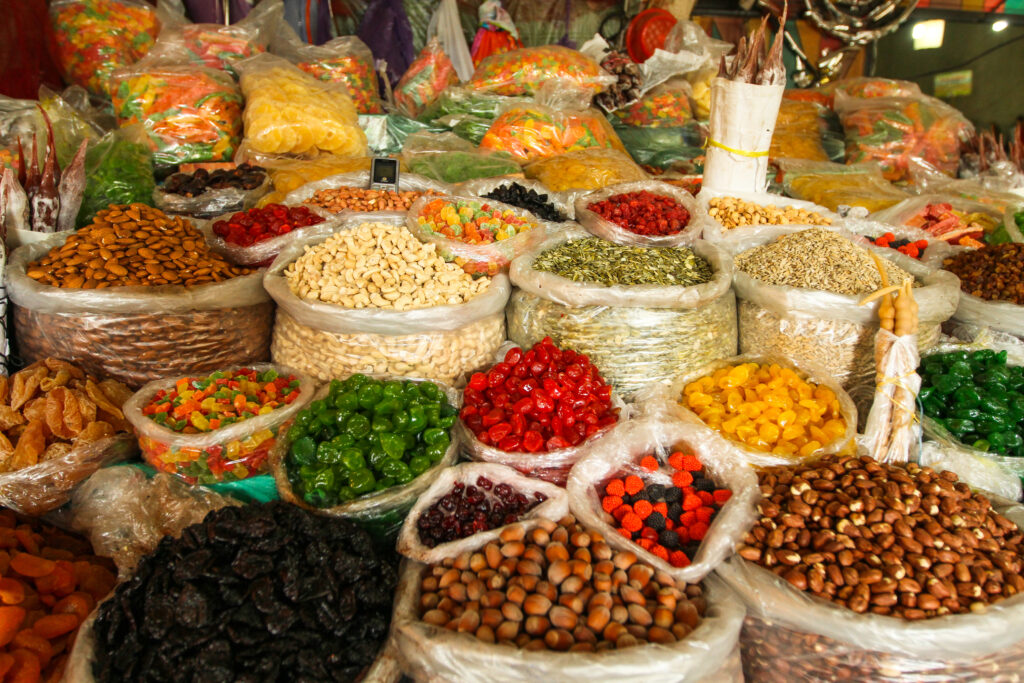
Artists sell their work at weekends at the Vernissaj, the open-air market in the park by the Dry Bridge; above, by the road between the bridges, there is a thriving street market where Soviet-era memorabilia, military uniforms, second-hand books, magazines, coins, banknotes, records and cameras are all sold alongside household items and all manner of bric-a-brac. The lingua franca here is predominantly Russian and this is the place to come if you are in search of a Stalin bust or communist lapel badge.
Soviet relics are few and far between in the Georgian capital, but head to the Dry Bridge and Dadaena Park and you’ll be transported to a bygone era. This daily flea market is a window to a time past, where pipe-wielding gentlemen and elderly babooshkas spread out their age-old blankets to display their jumbled wares.
Wander the higgledy-piggledy rows and you’ll see tarnished military badges, well-thumbed Russian classics, mismatched crockery and 1980s electricals, all mixed together with a good helping of plumbing fixtures, spare tyres and, if you’re lucky, a priceless antique. It’s a must for bargain hunters and anyone with an interest in the USSR, but even if you don’t class yourself in either of these categories, it’s a joy to amble the curbs and soak up the old-school vibe.
Whether on the hunt for a specific souvenir, filling your stomach with the array of eclectic culinary delights on offer from the market’s food stalls (be sure not to miss the khachapuri, a Georgian staple consisting of cheese-stuffed bread), or simply hoping to soak in the atmosphere of the city’s most dynamic area, a weekend getaway to Tbilisi is incomplete without a spot of shopping.
Eating and drinking in Tbilisi
Barbarestan
Tbilisi is awash with fantastic eateries, serving everything from traditional Georgian khinkali (dumplings) and khachapuri (cheese bread) to more upmarket, fine-dining fare. At Barbarestan, however, the two worlds collide: this rustic but refined restaurant has taken the city by storm with its modern approach to age-old classics.
Housed in a former butcher’s cellar, where meat hooks hang alongside kitsch floral lampshades, this family-run eatery draws its menu from a 19th-century cookbook found at the Dry Bridge flea market written by Barbare Jorjadze, one of the country’s first and most celebrated female chefs. After being talked through the history of the restaurant – during which you’ll be shown the prestigious cookbook, enigmatically encased in a wooden box – you’ll be treated to a home-cooked feast, Georgian style: platter upon platter of breads and fresh salads, where the roasted aubergines coated in walnut paste are the star of the show, followed by the likes of melt-in-the-mouth lamb or freshly grilled trout, and all washed down, of course, with local Georgian wine.
A word of warning: if you’re looking for love, don’t sit at the corner of a table. Georgian legend has it that those who take the corner seat while eating will not marry for another seven years.
Fabrika
Once a Soviet textiles factory, this concrete shell has been transformed in to Tbilisi’s coolest (and most Instagrammable) hangout. With its fairy-lit courtyard, graffiti-plastered expanses and all-round artistic vibe, this urban space plays host to an array of alternative bars and cafes, pop-up shops, independent galleries, co-working spaces and the biggest hostel in the city.
The events calendar is as quirky and changeable as the surroundings, ranging from rooftop yoga sessions and photography masterclasses to urban art festivals and flea markets. A chilled-out creative hotspot by day, it turns into Tbilisi’s liveliest party venue come nightfall, when some of the region’s hottest DJs and performers take to the make-shift stages to bring this eccentric den to life.
Getting to Tbilisi
Tbilisi’s Lochini Airport is 18km east of the centre, reached by bus or taxi along the Kakheti Highway (a short stretch of which is now named George W Bush Avenue), or by train (just twice a day) from the Voksal, Tbilisi’s central station. There are signs in English from the city centre and a tall monument of a woman holding a sun at the turn-off.
Bus route 37 (a blue MAN bus) runs from the airport along the Kakheti Highway to Samgori (for metro and bus stations), Avlabari, the Baratashvili Bridge, Freedom Square, Rustaveli, Kostavas and Tamar avenues, giving a handy tour of the central area, and after half an hour reaching Station Square, where they leave from the stops in front of the railway station.
More information
For more information on Tbilisi and Georgia, check out Tim Burford’s guide: